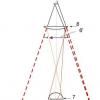The article contains the current position on remuneration for 2020, a form and a sample, reference books for free download. We recommend that you check the current form, because the Labor Code changes frequently.
Attention! Correctly draw up or update the position on remuneration will help you:
And the BukhSoft program will automatically calculate the salary, generate the entire "primary", accrue personal income tax and contributions, draw up "salary" statements and test it with all the verification programs of the Federal Tax Service, the Pension Fund of the Russian Federation and the Social Insurance Fund. Look at the correct order of calculation:
The procedure for calculating salaries in the BukhSoft program →
How to set up a wage system
Firms or entrepreneurs that hire workers under employment contracts must comply with all labor law rules. One of the basic rules is to pay for the work of hired personnel on time and depending on the complexity, quantity, quality of work and qualifications of the employee.
Employee benefits include remuneration for work performed, incentive amounts (for example, bonuses or valuable gifts) and compensation (for special working conditions or climatic conditions, for working at night, on weekends or holidays, overtime, etc.). The employer determines the types of payments to personnel, the procedure for their calculation and the timing of issuance, based on their applicable wage system. Depending on the type of activity and other business conditions, it can be, for example, time-based, piecework, commission, piecework, floating salaries, etc. Read more about payroll systems in the table.
Table. Remuneration of staff
|
Payment system |
How salary is calculated |
|
simple time-based |
Based on hours worked and rates, rates and |
|
Time premium |
Based on the hours worked and the rate to which the bonus is set as a percentage or a fixed amount for the fulfillment or overfulfillment of the production task |
|
Piecework direct |
Based on the production and pricing for the operation |
|
Piecework premium |
Based on output and cost per operation with a percentage or fixed bonus for meeting or over-fulfilling a production target |
|
Piecework progressive |
Based on the output and price per operation with payment at increased rates for excess output |
|
Commission |
Percentage of revenue to which salary may be added |
|
floating salary system |
Based on the employer's revenue or based on labor productivity adjusted for factors upwards or downwards |
|
chord |
Based on the chord assignment and pricing |
What is a payroll position?
This is a regulatory local document of the employer, which fixes the grounds, types, values and procedure for issuing labor remuneration to employees. The document is mandatory for both the employer and employees.
Sample salary statement 2020
There is no standard form for this local act; each employer develops it independently. One of the samples is shown below, it can be downloaded.
Should a sole proprietorship have a salary clause?
If an entrepreneur meets the criteria of a micro-enterprise, he may refuse to issue local documents if he concludes employment contracts with employees in the standard form from Decree No. 858 of 08.27.16. Micro-enterprises include small firms and entrepreneurs with no more than 15 employees and annual revenue no more than 120 million rubles. Such firms and entrepreneurs do not need Regulations on remuneration, unified labor contracts are enough for them to establish remuneration systems, types of payments to staff, the procedure for their calculation and the timing of issuance.
The current sample of a standard employment contract for a micro-enterprise is given below, it can be downloaded.
To refuse local documents or not - firms and entrepreneurs decide on their own. Using a model contract is their right, not an obligation. Therefore, any entrepreneur-employer can draw up and approve the Regulation on remuneration and the Regulation on bonuses.
How to draw up a salary statement
As a rule, a local document on payments to personnel contains general provisions (what issues the document solves, in accordance with what laws, etc.), the main part and the final part (for example, the moment of entry into force, how to change or supplement the document, etc.). d.).
The main part of the document fixes the remuneration system, salaries and the rules for their indexation, all allowances, surcharges, bonuses, compensations, social and similar payments, the procedure for their calculation and terms of issue, and the responsibility of the employer.
How to approve a local document
If employees are not registered in a trade union, then after registration the document must be approved by order of the head. Then you need to get signatures from all employees about familiarization with the document. The wording of the order can be as follows:
- Approve the Regulations on remuneration in Simvol LLC and put it into effect from "__" ___________ ____
- Head of the personnel department Krapivina K.I. before "__" ___________ ____, familiarize the staff with the Regulation against signature.
- Accountant Rubleva V.O. calculate and accrue wages in accordance with the Regulations from the date of its entry into force, specified in clause 1 of this order.
You can collect signatures from all employees in the familiarization log, on additional sheets to employment contracts or on the sheet attached to the Regulations.
Whether to update the local document
Changes to the Labor Code are made quite often, and many of them relate to payments to employees, compensation and guarantees to personnel, work and rest schedules. Employers need to keep track of all changes and reflect them in a local document in a timely manner. For example, in 2018 new rules came into force on:
- salary in foreign currency;
- employment of minor employees;
- maximum working hours for minors;
- additional payments for work on holidays or weekends with processing;
- part-time work for underage employees and pregnant women, etc.
Regulations on bonuses
It makes sense to draw up this local document if the employer considers the bonus system to be a priority component of the remuneration system. There is no standard form of the Regulation, each employer develops it independently. One of the samples is shown below, it can be downloaded.
If employees are not registered in a trade union, then after registration the document must be approved by order of the head and receipt of signatures from all employees on familiarization with it.
Sanctions for violations
Responsibility threatens the employer if he did not familiarize the staff against signature with the local document on payments. The fine for the company will be from 30,000 rubles. up to 50,000 rubles, for individual entrepreneurs - from 1,000 rubles. up to 5000 rubles, and the responsible employee (including the manager) will be fined in the amount of 1000 rubles. up to 5000 r.
Other useful documents
The following documents, which can be downloaded, will help to draw up or update the Regulation on remuneration or bonuses in time:
- Learn more about wage systems >>
- Learn how to properly apply piecework wages in the enterprise >>
- Also read about how to properly use the time wage system in the enterprise >>
- See how to properly draw up a position on
The regulation on remuneration is a local regulatory act (LNA), which is a set of remuneration rules that apply to a particular employer. The regulation on remuneration prescribes various salary nuances, such as, for example, established days for paying salaries, the procedure for deductions from wages, etc.
By the way, some employers in the LNA prescribe not only the procedure for remuneration, but also the procedure for paying bonuses to employees. Thus, the regulation on remuneration is transformed into a regulation on remuneration and bonuses for employees.
The procedure for adopting a regulation on wages
As a rule, the regulation on remuneration is adopted by the employer once, and then, if necessary, changes are made to it.
Keep in mind that when adopting a provision on remuneration, the opinion of the trade union (if any) must be taken into account (Article 135 of the Labor Code of the Russian Federation).
Please note that the regulation on remuneration must be familiarized with the signature of each employee when he is hired, as well as each employee in case of changes to this provision (Article 22, 68 of the Labor Code of the Russian Federation). Moreover, when hiring an employee, it is necessary to familiarize yourself with the LNA data even before signing an employment contract (Rostrud Letter dated 10/31/2007 No. 4414-6).
Regulation on remuneration: sample
There is no approved form of the regulation on wages. Therefore, each employer can develop its own form of such a provision.
You can familiarize yourself with a sample salary clause.
We also provided a sample of the Regulations on the remuneration of employees.
Regulation on the remuneration of employees from 2017
On January 1, 2017, amendments to the Labor Code came into force (Federal Law of July 3, 2016 No. 348-FZ). Thanks to these amendments, micro-enterprises have the right to completely or partially refuse to adopt local labor regulations. Accordingly, starting from 2017, microfirms may not adopt a provision on wages and material incentives for employees.
Each company has its own payment system, which is formed taking into account the volume of labor costs and norms. These include, minimum levels of allowances, bonus payments. in 2020 it will be necessary to draw up, unless the company describes its entire system of payments in employment contracts.
What is it for?
Below you can download a sample of the regulation on the remuneration of employees 2020 for free:
Sample regulation on remuneration of employees 2020
This document is a local act that determines the specifics of the calculation and payment of wages to workers. It indicates the terms of payments, the form, the amount of surcharges and allowances, the sequence of recalculation and the procedure for providing.
The legislation does not oblige heads of firms to have this document. But the labor inspectorate during the inspection may require it.
As a rule, the regulation on remuneration, the sample of which is presented above, is developed jointly by accountants, company lawyers and personnel specialists.
What information should it contain?
Let us briefly describe what information a sample wage regulation should contain. It should not only indicate the main types of charges, but also their size, which must correspond to that established at the legislative level.
Mandatory sections:
general rules, they indicate the goals and objectives that the document is intended to fulfill;
the amount of remuneration for work established in accordance with;
surcharges and allowances;
the final part, which indicates the validity of the document.
In addition, it may contain:
conditions for the payment of the premium;
pay slip form;
indexing procedure
The head of the enterprise must issue an order approving the regulation on remuneration.
sample order
Shelf life
According to the Order of the Ministry of Culture No. 558 in paragraph 598, the document is stored until it is replaced with a new one. If a new act is issued, the previous document is archived, where it is stored for 75 years.
Regulations on wages1. General Provisions 1.1. This Regulation has been developed in accordance with the current legislation of the Russian Federation and provides for the procedure and conditions for remuneration, the procedure for spending funds for remuneration, a system of material incentives and incentives for the Employees of Alfa CJSC (hereinafter referred to as the Organization). The Regulation aims to increase the motivation for the work of the personnel of the Organization, to ensure material interest Employees in improving the qualitative and quantitative results of labor: fulfilling planned targets, reducing the cost of producing a unit of output (work, services), improving technological processes, creative and responsible attitude to work. 1.2. This Regulation applies to persons hired in accordance with the administrative acts of the head of the Organization (hereinafter referred to as the Employer) and carrying out labor activities on the basis of employment contracts concluded with them (hereinafter referred to as Employees). This Regulation applies equally to Employees working on a part-time basis (external or internal). 1.3. In this Regulation, remuneration means money paid to Employees for the performance of their labor function, including compensatory, incentive and incentive payments made to Employees in accordance with the labor legislation of the Russian Federation, this Regulation, labor contracts, other local regulations of the Employer. At the written request of the Employee, remuneration may be made in other forms that do not contradict the legislation of the Russian Federation. At the same time, the share of wages paid in non-monetary form should not exceed 20 percent of the total amount of wages. 1.4. The remuneration of employees of the Organization includes: Salary, consisting of a salary (official salary), as well as additional payments and allowances for special working conditions (hard work, work with harmful and (or) dangerous and other special working conditions), as well as for working conditions that deviate from normal (if performance of work of various qualifications, combination of professions, work outside the normal working hours, at night, weekends and non-working holidays, etc.); Stimulating and incentive payments for the proper performance of labor duties performed in accordance with this Regulation and the Regulation on bonuses. 2. Wage system 2.1. The system of remuneration in this Regulation means the method of calculating the size remuneration payable to Employees for the performance of their labor duties. 2.2. The Organization establishes a time-bonus system of remuneration, if 2.3. The time-bonus system of remuneration provides that the amount of the Employee's salary depends on the actual hours worked, the accounting of which is kept in accordance with the timesheets. At the same time, along with wages, Employees are paid material incentives for performing labor functions, provided that they comply with the conditions for bonuses provided for by this Regulation and the Regulation on Bonuses. 2.4. The monthly remuneration of the Employees of the Organization consists of a permanent and parts variable. The permanent part of the remuneration is a guaranteed monetary reward for the performance by the Employee of the labor duties assigned to him. Permanent Part of the salary is the salary (official salary) according to the current staffing table. The variable part of the remuneration is bonuses, as well as allowances and additional payments for working conditions that deviate from normal. 3. Salary (official salary) 3.1. The salary (official salary) in this Regulation is understood as a fixed amount of remuneration of the Employee for the fulfillment of labor norms or labor duties of a certain complexity per month. 3.2. The amount of the salary (official salary) of the Employee is established in the employment contract. 3.3. The amount of salary (official salary) (excluding additional payments, allowances, bonuses and other incentive payments) of an employee who has fully worked out the norm of working hours cannot be lower than the minimum wage established by federal law. 3.4. The size of the salary (official salary) may be increased by the decision of the Employer. An increase in salary (official salary) is formalized by an order (instruction) of the head of the Organization and an additional agreement to the employment contract with the relevant Employee. 4. Surcharges 4.1. Employees of the Organization are entitled to the following additional payments: For overtime work; For work on weekends and holidays; For work on the night shift; For the performance of the duties of a temporarily absent Employee; For combining professions (positions). 4.2. In this Regulation, overtime is understood as work performed by the Employee on the initiative of the Employer outside the established working hours, daily work (shift), with the summarized accounting of working time - in excess of the normal number of working hours for the accounting period. For overtime work, Employees are entitled to additional payments: For the first two hours of overtime work - in the amount of 150 percent of the hourly rate; For subsequent hours of overtime work - in the amount of 200 percent of the hourly rate. These additional payments are not made to Employees who have an irregular working day. 4.3. For work on weekends and holidays Employees with time wages are subject to additional payments: In the amount of 100 percent of the hourly rate - if work on a weekend or holiday was carried out within the monthly norm of working time; In the amount of 200 percent of the hourly rate - if work on a weekend or holiday was performed in excess of the monthly norm of working time. 4.4. For the purposes of this Regulation, night work means work from 10 p.m. to 6 a.m. For work in the night shift Employees with time wages are subject to additional payments in 40 percent of the hourly rate. 4.5. For the performance of the duties of a temporarily absent Employee, an additional payment in the amount of 50 percent of the salary (official salary) for the main job is established. The specified additional payment is paid during the entire period of fulfillment of the duties of the temporarily absent Employee. 4.6. For combining professions (positions), an additional payment is established in the amount of 50 percent of the salary (official salary) for the main job. The specified additional payment is paid during the entire period of combining professions (positions). 4.7. The accrual and payment of additional payments listed in clauses 4.2-4.6 of these Regulations are made monthly in accordance with the timesheets. 4.8. The calculation of the hourly rate is made by dividing the amount of wages accrued in the billing period by the number of working days in this period according to the five-day working week calendar and by 8 hours (the length of the working day). 4.9. The total amount of additional payments established for the Employee is not limited to the maximum amount. 4.10. At the request of the Employee, instead of the above surcharges, he may be provided with additional days of rest. |
5. Surcharges
5.1. The employees of the Organization are provided with the following types of salary increments:
For a long work experience in the Organization;
For the intensity, intensity of labor;
For the use of a foreign language in the work;
For class.
5.2. For a long period of work, the Employee is given a salary bonus.
(official salary) in the amount of 10 percent of the salary (official salary).
In these Regulations, long-term work experience is considered to be work in the Organization for more than 10 years.
5.3. For the intensity, intensity of labor, the Employee is given a bonus of
up to 20 percent of the salary (official salary).
Specific amounts of allowances are established by order (instruction) of the head of the Organization.
5.4. For the use of a foreign language in the work of the Employee, an allowance is set in the amount of 15 percent of the salary (official salary).
The specified allowance is established for Employees whose job duties include contacts with foreign partners or work with foreign literature.
5.5. Drivers of the Organization are given a premium for classiness in the amount of up to 10
percent of salary.
The specific amount of the allowance is established by order (instruction) of the head of the Organization.
6. Bonus
6.1. Employees of the Organization holding full-time positions are given current and one-time (one-time) bonuses.
6.2. Current bonuses are paid based on the results of work for a month or another reporting period in accordance with the Regulations on Bonuses.
6.3. Current bonuses are calculated based on the salary accrued to the Employee for the reporting period (official salary), bonuses and additional payments to it in accordance with these Regulations.
6.4. Bonuses are not accrued to Employees who have disciplinary sanctions for:
absenteeism (absence from the workplace without a good reason for more than 4 hours in a row during the working day);
Appearing at work in a state of alcoholic, toxic or other drug intoxication;
Being late for the beginning of the working day without warning the immediate supervisor;
Failure to comply with the instructions of the head;
Failure to perform or improper performance of the duties assigned to the Employee.
The Employer has the right to prematurely withdraw from the Employee a disciplinary sanction for
On their own initiative, at the request of the Employee or at the request of his immediate supervisor.
The specified order is made out by the order of the head of the Organization.
6.5. One-time (one-time) bonuses are paid:
In connection with professional holidays, according to the results of work for the year - at the expense of profit
Organizations;
In other cases provided for by the Regulations on bonuses - from the payroll fund.
6.6. The amount of one-time (one-time) bonuses is established by order (instruction) of the head of the Organization, depending on the performance of each Employee.
6.7. The amount of one-time (one-time) premiums is not limited by the maximum amount.
7. Financial assistance
7.1. In this Regulation, material assistance means assistance (in cash or material form) provided to the Employees of the Organization in connection with the onset of emergency circumstances.
7.2. The following circumstances are considered extraordinary:
Death of husband, wife, son, daughter, father, mother, brother, sister;
Causing significant damage to the Employee's home due to fire, flood and other emergencies;
Injury or other harm to the health of the Employee.
The employer may recognize other circumstances as extraordinary.
7.3. Material assistance is paid out of the net profit of the Organization on the basis of an order (instruction) of the head of the Organization on the personal application of the Employee.
7.4. The provision of material assistance is carried out upon submission by the Employee of documents confirming the onset of emergency circumstances.
8. Calculation and payment of wages
8.1. Wages are accrued to Employees in the amount and in the manner prescribed by this Regulation.
8.2. The basis for payroll are: staff list, employment contract, time sheet and orders approved by the head of the Organization.
8.3. Timesheets are filled out and signed by the heads of structural
Subdivisions. The HR manager approves the timesheet.
8.4. Employees who have worked part-time, wages are accrued for the time actually worked.
8.5. The determination of wages for the main and combined positions (types of work), as well as for the position held in combination, is carried out separately for each of the positions (type of work).
8.6. Wages are paid to Employees at the cash desk of the Organization or transferred to the bank account specified by the Employee on the terms stipulated by the employment contract.
8.7. Before the payment of wages, each Employee is issued a pay slip indicating the components of wages due to him for the relevant period, indicating the amount and reasons for the deductions made, as well as the total amount of money to be paid.
8.8. Payment of wages for the current month is made twice a month: no later than the 20th day of the month (for the first half of the month - an advance payment of 50% of wages) and no later than the 5th day of the next month (final payment for the month).
8.9. If the day of payment coincides with a weekend or non-working holiday, payment of wages is made on the eve of this day.
8.10. If the Employee fails to perform official duties through the fault of the Employer, payment is made for the time actually worked or work performed, but not lower than the average salary of the Employee.
In case of failure to perform official duties for reasons beyond the control of the parties to the employment contract, the Employee retains at least two-thirds of the salary (official salary).
In case of failure to perform official duties due to the fault of the Employee, payment of salary (official salary) is made in accordance with the amount of work performed.
8.11. Downtime due to the fault of the Employer, if the Employee warned the Employer in writing about the beginning of downtime, is paid in the amount of at least two thirds of the average salary of the Employee. Downtime for reasons beyond the control of the parties to the employment contract, if the Employee warned the Employer in writing about the start of downtime, is paid in the amount of at least two-thirds of the salary (official salary).
Downtime due to the fault of the Employee is not paid.
8.12. Deductions from the employee's salary are made only in cases
provided for by the Labor Code of the Russian Federation and other federal laws, as well as
employee's statement.
8.13. Amounts of wages, compensations, other payments not received within the established period are subject to deposit.
8.14. Certificates of the amount of wages, accruals and deductions from it are issued only personally to the Employee.
8.15. Payment for leave to Employees is made no later than three days before its start.
8.16. Upon termination of the employment contract, the final settlement of the wages due to the Employee is made on the last day of work. If the Employee did not work on the day of dismissal, then the corresponding amounts are paid no later than the next day after the Employee submits a request for payment. In the event of a dispute about the amounts due to the Employee upon dismissal, the Employee shall be paid an amount not disputed by the Employer within the period specified above.
8.17. In the event of the death of the Employee, wages not received by him are issued to members of his family or a person who was dependent on the deceased, no later than one week from the date of submission of documents certifying the death of the Employee to the Organization.
9. Responsibility of the Employer
9.1. For the delay in payment of wages, the Employer is liable in accordance with the legislation of the Russian Federation.
9.2. In the event of a delay in the payment of wages for a period of more than 15 days, the Employee has the right, by notifying the Employer in writing, to suspend work for the entire period until the payment of the delayed amount. The specified suspension of work is considered forced absenteeism, while the Employee retains the position and salary (official salary).
10. Final provisions
10.1. This Regulation comes into force from the moment of its approval and is valid indefinitely.
10.2. This Regulation applies to labor relations that have arisen before its entry into force.
The regulation on remuneration is an internal local act of the organization. The document also describes the remuneration for work, and also establishes the procedure for material incentives and incentives for employees.
The legitimacy of increasing tax expenditures by the amount of total wages depends on the situation. An employer who has not bothered to develop a document on remuneration runs the risk of not proving to tax inspectors the legitimacy of reducing the tax base for income tax or STS by the amount of surcharges and bonus payments to their subordinates.
General information about the document
The regulation on remuneration is not a mandatory document, since the main part of the norms enshrined in it is reflected in the rules on internal labor regulations, in the agreement on the performance of official duties, in the collective agreement, and is also approved by the current Labor Code. In fact, the provision is an information paper that combines all of the above sources and the wage rules applied at the enterprise.
The document usually reflects the procedure for assigning and providing bonus payments, respectively, it can confirm the validity of these employer's expenses (important for taxation).
Concept and essence
The composition of wages includes not only or, but also various compensatory or incentive payments, the amount of which is regulated by applicable law. None of the regulations contains clear rules regarding the combination of provisions on remuneration and bonuses. Each manager can independently decide how his internal documents should look.
Based on the analysis of chapters 20 and 21 of the Labor Code of the Russian Federation, it can be concluded that when drawing up a regulation on remuneration, one should start from the following main issues:
- General requirements for a subordinate when calculating monthly payment. The position can be based both on general requirements and on special conditions related to the category, qualification level or experience of the employee.
- The applied wage system (, etc.).
- Minimum wage.
- limit value .
- Remuneration rules related to the specifics of the enterprise (part-time employment or replacement of a temporarily absent employee, etc.).
- individual specialists, depending on the work function performed, etc.
- The procedure and term for the provision of regular income.
In a special place is the premium financial incentives for specialists. Article 144 of the Labor Code of the Russian Federation allows the head of the institution to independently determine allowances and bonuses for subordinates, taking into account the opinion of the representative of the employees.
Regulatory regulation
When drawing up a regulation on remuneration, the employer must be guided by the norms of the Labor legislation:
- Art. 131 of the Labor Code of the Russian Federation– monthly wages are provided in monetary terms, and if there is a written request from a subordinate, up to 20% can be replaced by an equivalent product.
- Art. 133.1 of the Labor Code of the Russian Federation establishes the condition that the minimum income cannot be lower than the minimum wage in force in a particular region.
- Art. 134 Labor Code of the Russian Federation reflects the demand for in line with the rate of inflation and the increase in the cost of necessary goods and services.
- Art. 136 Labor Code of the Russian Federation: the place and term of providing monthly income must be reflected in the collective agreement, while the maximum distance between payments cannot exceed 15 days.
The procedure for determining monthly income and bonus payments usually depends on the complexity of the work, the conditions and intensity of work, the quality of the duties performed, etc.
Attention: the minimum wage is an established monetary value, less than which the employer does not have the right to pay any of his subordinates, but the salary of a specialist may be inferior to this value.
Drafting a salary statement
The regulation governing the procedure for appointing and paying wages is an internal local act of almost every enterprise. In accordance with Art. 135 of the Labor Code of the Russian Federation, the form ready for approval must be agreed with the representative body of employees.
By whom and for whom is it developed
 The development and correction of the document is the responsibility of an economist or accountant (depending on the size of the enterprise). If the company assumes the presence of a lawyer, then the specialist should also take part in the preparation, because the wage provision that does not comply with the current regulatory framework may be invalidated during the audit, therefore, the controllers will not allow it to be used and apply penalties to the manager.
The development and correction of the document is the responsibility of an economist or accountant (depending on the size of the enterprise). If the company assumes the presence of a lawyer, then the specialist should also take part in the preparation, because the wage provision that does not comply with the current regulatory framework may be invalidated during the audit, therefore, the controllers will not allow it to be used and apply penalties to the manager.
Only the director has the right to approve the position, like any other internal document of the company, on whose will the frequency and magnitude of various additional payments and allowances, as well as the regularity of salary indexation, depend. The correct completion of the procedure involves the involvement of the trade union committee, which will be able to assess, observe and defend the interests of workers.
Structure and form
The salary statement usually includes:
- General provisions- a section that reflects information on the applicable regulations underlying the calculation of monthly income, as well as on the list of employees covered by this document.
- Wages. It contains information on the procedure for accrual, on the period of provision, on the minimum possible amount of regular income, on the wage system used (time-based, piecework or combined), on the methods of generating earnings for individual groups of specialists (for example, workers in harmful conditions), on tariff rate and even a maximum percentage of wage replacement in kind.
- Premium payouts. The current legislation allows the employer to establish various kinds of allowances for their subordinates. The main condition is that the amount of the total amount for the month should not be less than the minimum wage.
- Special conditions. The section may include information on the full list of additional payments due to employees, for example, for the existing category, for processing or going out after hours. Here you can also describe the procedure for paying for vacation, sick leave, or providing a lump sum payment timed to coincide with going on a well-deserved rest.
- Conclusion. Without this part, the entire provision may lose legal force, since it is here that the compilers are indicated, as well as the start time and period of validity of the document.
The internal local act is approved by the head, and then provided to subordinates for review against signature.
Sample
At the legislative level, the exact form of the Regulation on remuneration is not defined, so the employer can develop his own local act. The approval of the document requires the issuance of a separate order announcing the entry into force of the provision. In this case, you need to remember the following rules:
- For registration, use the printed form. The document must be signed by the head and confirmed by the seal of the institution.
- The content of the sections cannot differ from the current labor legislation. The presence of contradictions can result in penalties.
If the manager encourages his subordinates with various types of bonuses, then it is advisable to create a separate provision on the procedure for assigning incentive payments.
An example of a pay clause can be downloaded for free.
Sample payroll statement

















